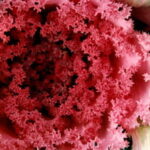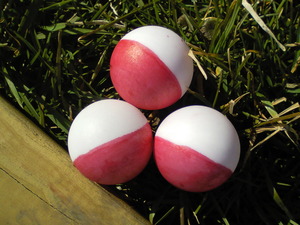Cinnabar is an ancient stone. It was mined extensively by the Greeks and Romans, although not for use as a gem. It was, instead, mined for its mercury content, which was used in the making of many other items. It was also used as a red pigment for dying fabric, coloring pottery, and for painting.
The Egyptian and Mayan cultures also used cinnabar in their burial ceremonies. While the Egyptians used for pottery and ornamental idols, the Mayans used it in jewel form in the actual burial coffins of their most prized dead. Both cultures thought that the highly toxic nature of the stone would help to deter grave robbers.
The stone’s name comes from the Greek word “kinnabari,” which was over the years altered to the current form cinnabar. It means “red lead,” although in reality the stone is primarily made up of mercury. It is, however, red in color; ranging from vermilion red to a deep brick brownish-red.
The qualities of cinnabar are similar in nature to those of quartz. That means that it is highly refractive but a big soft in nature. It measures only about a three on the Mohs scale of hardness.
Cinnabar is usually found in areas where volcanic activity has taken place or where hot springs occur. It is mined in several areas throughout the world including China, Italy, Palestine, Peru, Serbia, Spain, and the United States. In the U.S., it is found in Arkansas, California and Nevada.
The mining of cinnabar can be both difficult and dangerous because of the stone’s mercury content. It is considered a hazardous material and has been responsible for more than a few cases of mercury poisoning throughout the years. For this reason, in many areas where it is mined extensively outside of the U.S., convict labor is used to bring the stone to the surface.
Although obviously toxic, cinnabar is also considered medicinal in the Far East. There, it is reduced to its powder form – – arsenic – – which is used in various medicines. However, it is also used in materials that are specifically meant to kill, like rat poison.
The Chinese have used cinnabar as an ornamental stone for hundreds of years. Because of its softness, it is usually lacquered to protect it. However, the lacquer finish adds a great deal to the overall ornamentation. Of course, in the early years, little thought was given to the toxic concerns of the stone. These days, other types of material has replaced cinnabar in similar modern pieces.
Because of its toxicity, however, cinnabar that is used in jewelry making is treated to remove the mercury, replacing it with a safe resin material. As a side benefit, the resin helps to strength the stone so that it can be used more successfully as a gem. In its natural form, cinnabar only ranks about a two on the Mohs scale of hardness.
Although rather rare today, cinnabar makes stunning jewelry. It is perfect for ornate carving and has impeccable texture and color for beading.
Even with resin support, cinnabar isn’t well suited to jewelry items like bracelets and rings. However, it makes stunning earrings, pendants, and necklaces.
Caring for cinnabar can be tricky. It should never be immersed into technology driven jewelry cleaners like ionic or ultra-sonic cleaners. It should also not be put into strong jewelry cleaning chemicals as they can damage the natural look of the stone.
The best way to clean cinnabar is with a soft jewelry polishing cloth. While it is possible to also clean it with a damp soft fabric, exposure to any type of liquid should be kept to an absolute minimum.
Storing cinnabar jewelry should also be well thought out. I recommend boxing cinnabar pieces individually, or pouching them in cloth or velvet before mixing them in with other jewelry items.
Although the Chinese continue to use cinnabar’s derivative in medicine, it is not used that way in the western world. The Chinese believe that it helps to clear the mind of fever and cures insomnia. It is also used to treat sore throats and other diseases of the mouth and to improve certain skin diseases and infections.
In new age medicine, cinnabar is believed to be a protection stone that keeps the wearer safe from evil forces. Others also believe that it brings good luck and great fortune. Still others think that it ensures long life and happiness.





